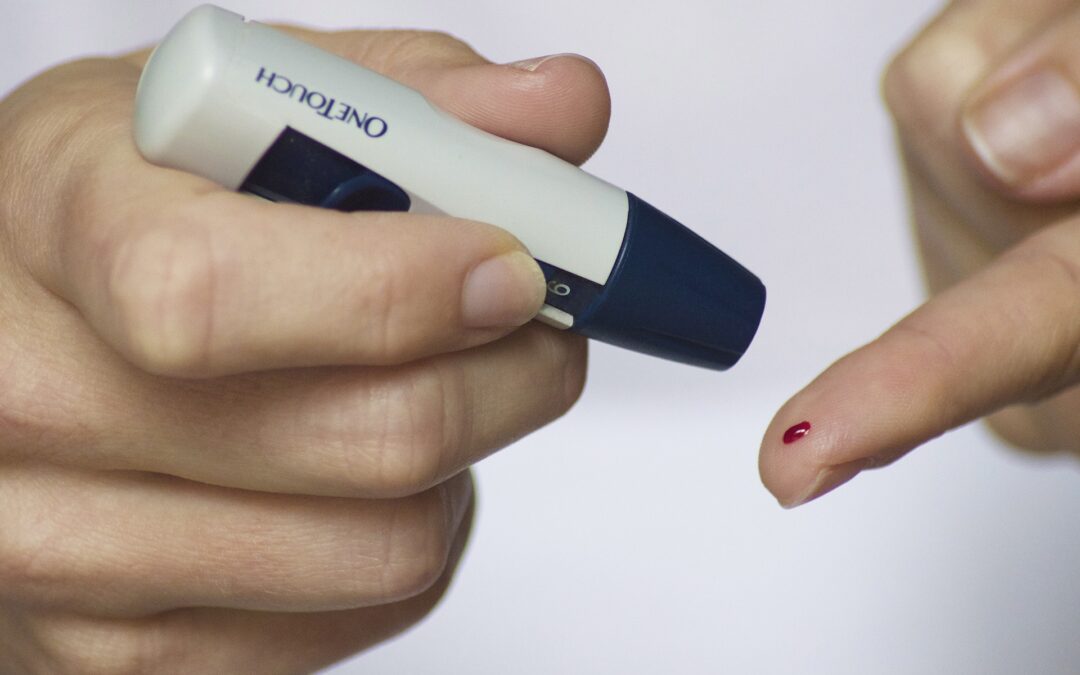Your blood sugar level is the measurement of the concentration of glucose in the blood. On average, the blood does have some amount of glucose already present. However, for some, it can be too much or not enough at all. These two extremes can make you more susceptible to disease in the body that some persons might have. Not only can it cause some major metabolic disorders, but it can also cause high blood pressure which can lead to a stroke, heart attack, kidney failure, and hardening of the arteries.
 On the other hand, low blood pressure can cause, dizziness, fainting, or fatigue. These are just some of the risk factors that can come from irregular blood sugar levels.
On the other hand, low blood pressure can cause, dizziness, fainting, or fatigue. These are just some of the risk factors that can come from irregular blood sugar levels.
Diseases that affect blood sugar levels
Diabetes: Diabetes is the main metabolic disease that we think of when dealing with elevated blood sugar. Our bodies need glucose in order to make energy, and glucose is collected in the bloodstream. However, when your body is unable to make insulin to clear the glucose from your bloodstream and transfer it into your cells for energy, the glucose remains in the blood and may lead to diabetes.
Hypoglycemia: This condition occurs when your level is too low. When you have not eaten, you have a low level of glucose in your system. Unlike diabetes, hypoglycemia is not long-term and can happen suddenly. When this happens all that is needed to do for most is to eat something that is high in simple carbohydrates. Also, it is not recommended to continue exercising until you bring your blood sugar levels back up.
Good vs. bad blood sugar levels
 To see if an individual has a good blood sugar level normally they are tested up to eight hours after a meal. Sometimes, individuals are tested right before breakfast. The normal measurement for this time should be around 70 to 100 milligrams per deciliter. For those who just ate a regular meal, blood sugar levels should be between 135 to 140 milligrams per deciliter. These are the average normal range if blood sugar is measured. If your blood sugar level rises above 180 or 200 or if it falls below 65, then your doctor should take the necessary precautions and discuss what to do next.
To see if an individual has a good blood sugar level normally they are tested up to eight hours after a meal. Sometimes, individuals are tested right before breakfast. The normal measurement for this time should be around 70 to 100 milligrams per deciliter. For those who just ate a regular meal, blood sugar levels should be between 135 to 140 milligrams per deciliter. These are the average normal range if blood sugar is measured. If your blood sugar level rises above 180 or 200 or if it falls below 65, then your doctor should take the necessary precautions and discuss what to do next.
How exercise regulates blood sugar levels
When people have diabetes, it means that their level is just too high. Many people know that the main cause of diabetes in the first place is a poor diet. For those who want to avoid diabetes, these factors can be avoided by exercising and dieting.
However, for the few that already have diabetes, exercising and a proper diet can still help to maintain blood sugar levels. Exercising helps in the following ways:
- Insulin sensitivity is increased, so your cells are better able to use any available insulin to take up glucose during and after activity.
- When your muscles contract during activity, it stimulates another mechanism that is completely separate from insulin. This mechanism allows your cells to take up glucose and use it for energy whether insulin is available or not.
As we all know, the best elixir for maintaining stable levels is to eat a well-balanced diet by limiting highly processed foods and to do at least 30 minutes of exercise 4-5x/week.
If you already have diabetes, give me a call so we can discuss how I can help you lower your blood sugar levels and get you on the path to a healthy body!

